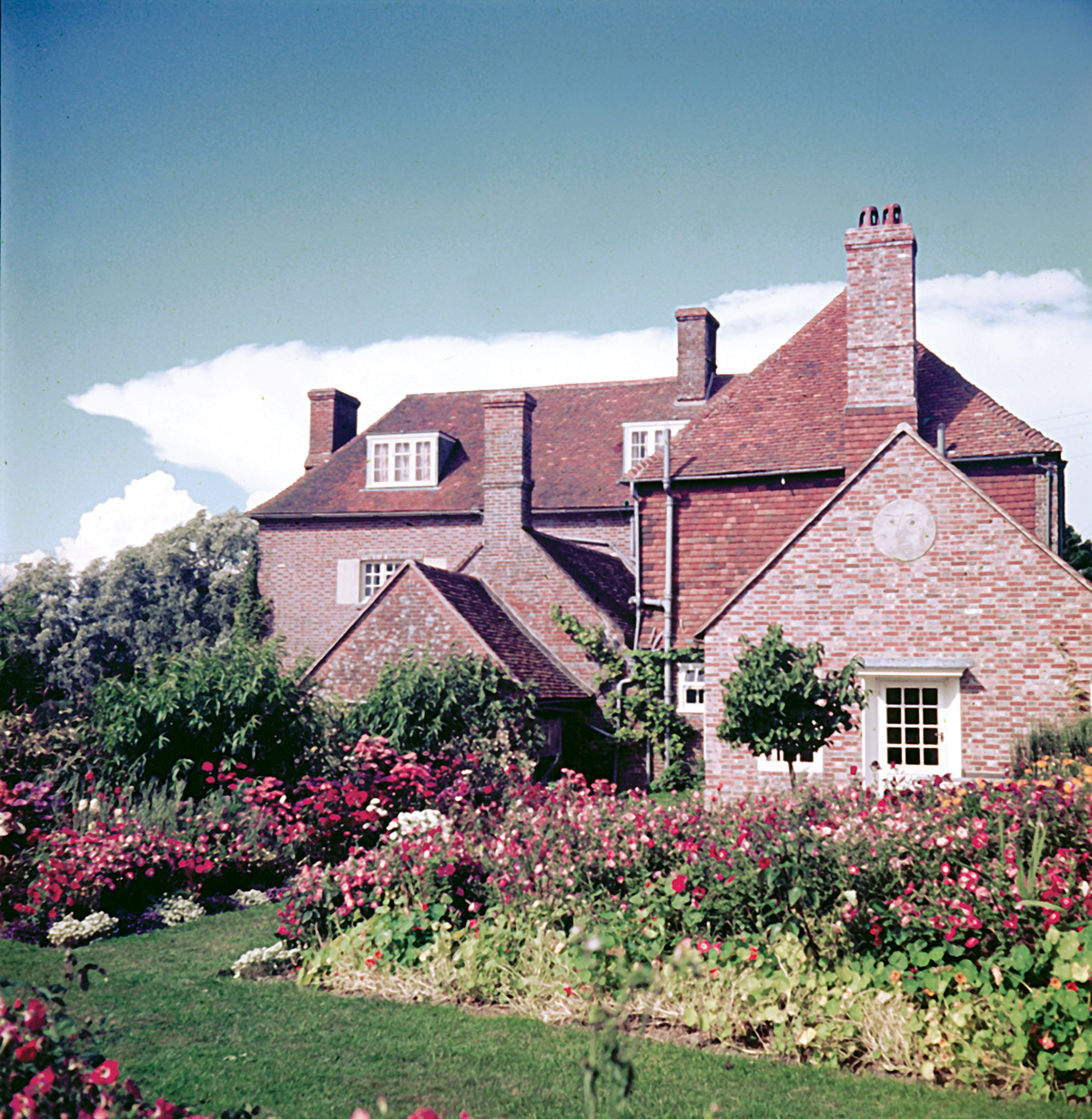
Lee Miller relaxing in her garden circa 1958. Photo by Roland Penrose. ©Lee Miller Archives , England 2023. All Rights Reserved. leemiller.co.uk

Photo courtesy of Lee Miller Archives, England 2023.
Shared with her husband, Surrealist painter Roland Penrose, Farleys House became the embodiment of Lee’s boundless energy for growing her own ingredients and using them in her delicious concoctions for family and friends. In fact, considering the fervor with which she adopted her new occupations, it seems as if gardening may have been a metaphor for the former life she chose to bury in order to begin anew. The coterie of regular weekend visitors that Lee enchanted with her imaginative dishes included Max Ernst, Dorothea Tanning, Pablo Picasso, Joan Miró, and Man Ray, with whom she lived for three years in the early ‘30s in Paris.

A grape-covered trellis tunnel is among the bounty of vegetation grown in the gardens surrounding Farleys House. Photo by Charlotte Moss.

Parsley

Borage flowers

Chard

Mint
In the war-torn Europe that she witnessed first-hand, Lee knew the prospect of tomorrow was not necessarily a given. However, in her garden at Farleys House, she savored the promise of each day as something new. Seasonal changes encouraged activities year-round like spending time with seed catalogs in the fall and writing to her parents in Poughkeepsie, New York, in the winter to ask for flower and sweet corn seeds. Lee was a quick study with a can-do attitude, so her gardening took off quickly. She insisted that her herb garden be close to the kitchen door in order to easily snip her favored chives, parsley, basil, tarragon, mints, and fennel. Borage, lemon balm, thyme, and Greek oregano were also planted near strawberry plants and large raspberry cages. The garden even included a grape-covered trellis tunnel.
As Lee’s ardor and prowess for gardening and cooking developed, so did her cookbook collection. A compulsive buyer, Lee filled all corners of the house with her books. Finally, Roland relented and built a cookbook room—a place of her own to plan her garden and work on recipes and menus. Roland and son Antony also built a lily pond with a sculpture so Lee would have something to look at outside her kitchen window.

Lee found the most joy in growing her own ingredients and created homemade dishes to serve to friends and family. This picture shows one of the many farm-to-table gatherings she hosted. Photo by Anthony Penrose. ©Lee Miller Archives , England 2023. All Rights Reserved. leemiller.co.uk
Lee died in 1977 without ever having mentioned the cache of photographs, negatives, and manuscripts she had hidden in a corner of the attic. When Antony’s wife, Suzanna, later discovered them, Antony learned for the first time about this part of his mother’s life. While she was alive, Lee never shared with her son that she had been embedded with allied troops and was one of the first journalists to enter a liberated Paris in 1944. And she never talked of her past as a famous photographer and war correspondent. Since this revelation, Antony has spent a lot of time honoring his mother’s legacy and getting to know her better posthumously.
In a film to be released this year, Kate Winslet will play Lee Miller during the defining period of her life from 1938-1948. Winslet stated, “This is the story we want people to know about Lee more than the many other parts of her life.”
While Lee Miller’s path to a life of gardening and cooking was long and circuitous, its success was her personal reinvention. After her death, her family scattered her ashes over her beloved herb garden in a final act of commemorating her life and passion. As Lee once said, “Cooking is pure therapy.” For her, indeed it was.
For more information about Lee Miller, Roland Penrose, and visiting Farleys House, visit the Farleys House & Gallery website.
With a lifelong love of gardening, designer Charlotte Moss has long been intrigued with what draws people—especially women—into the world of horticulture. Some have made it their professions, while others have become enthusiasts, patrons, philanthropists, or simply weekend hobbyists. And then there are those who write about all things gardening. In her new column for FLOWER, Charlotte explores some of these women and the journeys that led to their passions for plants and flowers. She also has a forthcoming book with Rizzoli on the subject of gardening women set to release fall 2024.



